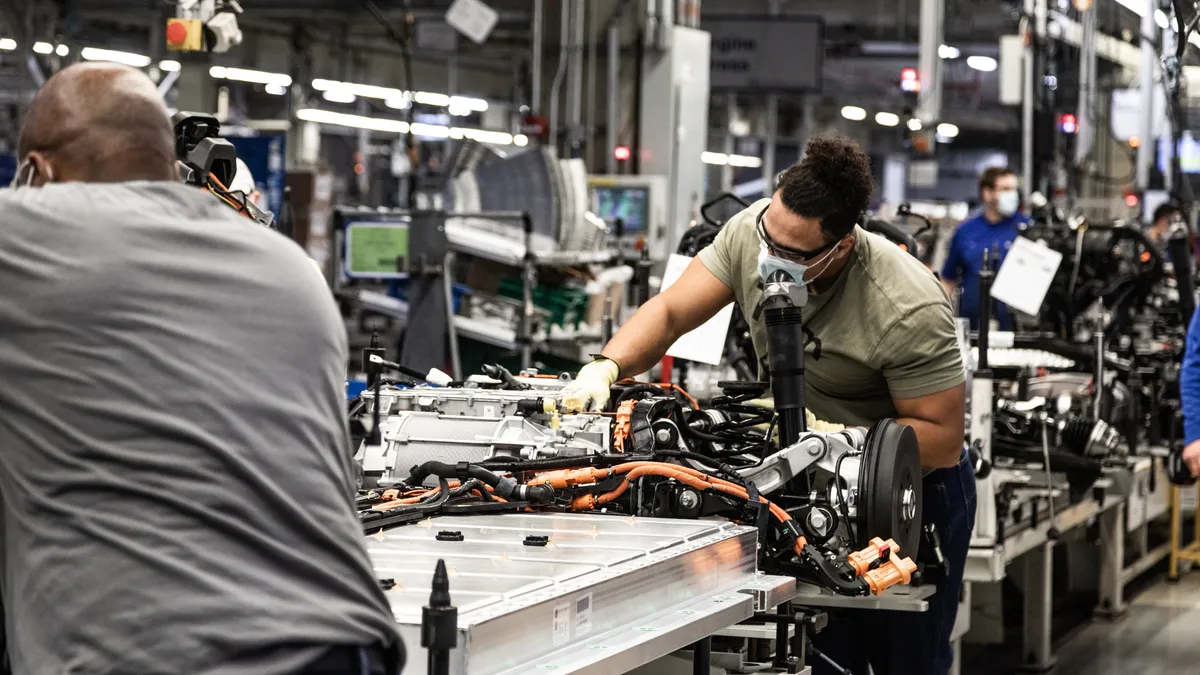Many of the recycling industry's current discussions about the flow of recovered material center on the loss of China as a viable end market in recent years. But new data indicates there may have been difficulties in plastic film markets even before China's restrictions took hold.
A new report commissioned by the American Chemistry Council's plastics division shows that a minimum of 1 billion pounds of film, including bags and wrap, was recovered for recycling in 2017. This marked a 54% increase in post-consumer film recovery since 2005, but a 24% decrease between 2016 and 2017. Report author More Recycling explains the results are based on figures submitted in an annual voluntary survey of reclaimers, purchasers and other industry participants.
Nearly every film category — polyethylene (PE) clear film, PE colored film, PE agricultural film, MRF curbside film and other film — experienced dips, leading to the overall 24% decrease from 2016. However, PE retail bags and film showed a 15% increase.
While this is seen as one sign of successful retail store takeback programs, a precipitous 46% decline in export volumes over the same period raises questions about where the plastics ended up. More Recycling suggested this market change was due to early rumors of China's desire to implement material bans and a tighter import contamination standard in January 2018.
"We knew in the summer of 2017 that this would be happening, and the market started to react very quickly," said Emily Tipaldo, director of strategy and business development at More Recycling. "There was definitely tension building that caused the markets to react … It's telling to see the impact even before the Chinese restrictions [took effect]."
The export reduction contributed to a shift for domestic buyers, who purchased more recovered material than export buyers for the first time since 2011. Domestic purchases increased by 2% in 2017.
"That’s the silver lining, that the lack of export markets has, to some degree, forced folks to find domestic markets ... They had a little growth in that area," Tipaldo said.
Domestic data gap
The ACC report's authors are hopeful they will see continued growth in domestic demand when 2018 data analysis is complete. But that still might not fully make up for the loss of export markets.
The decrease in film export purchases resulted in a 315 million pound decline in total film recovered for recycling in 2017 from the prior year. Because the survey only asks about material sold to reclaimers for recycling, the ACC report has no data on what's happening to excess film.
"Whether it goes to landfill or waste-to-energy, we don’t have those data points," Tipaldo said.
Some industry participants believe filling that information gap would paint a more complete picture of the film recycling value chain.
"What's missing from the report is a quantification of the bags that were collected and sent to landfill and incineration," said Jan Dell, an independent engineer with nonprofit The Last Beach Cleanup.
The ACC report does note numerous factors toward the end of 2017 changed the economics of film recycling, making disposal more cost-effective than the shipping and handling required to get material to market.
The Last Beach Cleanup views the decrease in film exports as positive, considering one of the organization’s key initiatives is keeping plastics domestic. Dell often raises concerns about the environmental and social effects of exporting plastic scrap.
However, Dell said the fact that hundreds of millions of tons of domestic film intended for recycling appear to be going to landfills or incinerators means more needs to be done to reduce the amount of single-use plastics in circulation. Besides being detrimental to the environment when mismanaged, plastic bags and films are one of the top problem items at MRFs because they become entangled in sorting and processing equipment.
"We need to support plastic bag bans across the nation," she said. "The optimum solution is not trying to figure out what to do with it, the optimum solution is to make less of it to start with."
Creating demand
Bag bans can be a controversial topic in the plastics sector, especially considering the uptick in plastic retail bags reclaimed through industry-backed programs. While demand for post-consumer resins (PCR) is beginning to grow, significant disconnect still exists on the supply and demand sides of the equation.
PCR quality varies greatly and most demand is for near-virgin resins. Costs to produce PCR are rising in some cases due to varied feedstock streams, the increased specialization of film applications and materials' inherent levels of contamination upon reclamation. As a result, the report states that using PCR in modern, highly-engineered resin and packaging end markets “requires increased innovation in plastic film recovery."
The report also recommends aligning environmental and economic goals, because companies that incorporate PCR into packaging and products are not seen as adequately recognized for their efforts. That can further reduce end market demand.
"When more consumers reward companies that use PCR through their purchase of PCR-containing products," reads the report, "we will likely see more drive for recycling and less plastic waste."





















